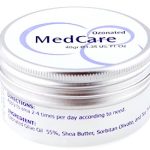If you’ve never come across ozonated olive oil, the combination of ozone and olive oil may sound like something of an odd combination; they’re strange bedfellows, surely?
Indeed, olive oil tastes terrific and offers many particularly nutritious properties, while although ozone tends to trigger fear and dread in many people’s minds (owing to the inevitable thought of the depletion of the all-important ozone layer in the Earth’s atmosphere), it obviously plays a critical role up there between terra firma and space.
In fact, ozone (a pungent blue gas in its most natural form) is crucial because of its air-cleansing capabilities and, although toxic when inhaled, it can be treated and combined with olive oil to forms half of a hugely therapeutic product – not least for the surface of the skin.
Ozonated olive oil – what is it?
As so often happens with scientific breakthroughs, ozonated olive oil was discovered quite by accident. Back in the early 1900s, tuberculosis was often treated by having sufferers breathe in ozone through olive oil. Once this concoction was found to be more effective as a salve treatment for the skin (and so on; see below), the ozone-containing oil was transformed into a gel, ensuring the ozone could be held and prevented from escaping for longer.
Indeed, in this form, ozonated olive oil really began to become popular after the legendary engineer and inventor Nikola Tesla first marketed it in 1904, which led to pharmacies throughout the world selling it as ‘Glycozone’. Popular in Europe, especially, for many decades, its use for treating a wide variety of ailments is now growing throughout the United States, which has ensured further research into what ozonated olive oil is capable of has ramped up like never before.
How is it manufactured?
Ozonated olive oil is produced via cold-pressing virgin olive oil through a process called ‘ozone injection’. This sees ozone bubbled into the olive oil – actually, for several months to thoroughly complete the process. And that’s a moot point because, while lesser companies tend to rely on low-quality ozone (a corona generator) to create the product, potentially resulting in contamination of the oil, highly respected manufacturers of ozonated olive oil instead opt for the best possible quality (a cold plasma generator); so, obviously, buying only well-reviewed products from reliable manufacturers is definitely the way to go.
Ozonated olive oil benefits
Of all the ailments that ozonated olive oil is popular for treating, skin problems and conditions are usually top of the list. Used as a topical treatment then, it can be applied directly to the skin as would be a salve or cream; its advantages being its capacity, thanks to its antibacterial and antioxidant properties, to sterilise and clean wounds, cuts and bites and stimulate cell regeneration:
- Candida and thrush – candida is a form of infecting-yeast that can cause much irritation in the body, not least vaginitis in pregnant women or those who commonly take antibiotics, and the same yeast is responsible for the mostly-female-afflicting condition that’s thrush; candida and (especially) thrush then can be treated by swabbing an affected area with a cloth daubed in ozonated olive oil to reduce symptoms and infection
- Burns, cuts, bites and wounds – a big treatment focus for ozonated olive oil are minor burns, lesions, bites and the such like (including insect bites and chapped lips); indeed, many people use ozonated olive oil products for this alone and why not, especially when recent research has found that guinea pigs treated with it to recover from wounds showed significant success over those treated with products containing totally unrelated ingredients1
- Athlete’s foot – sufferers of Athlete’s foot or nail fungi may want to soak they feet in water for about 10 minutes, dry them thoroughly and then apply ozonated olive oil to the affected areas; this process ought to be repeated a few times each week for a three-week-period (indeed, beyond when affected areas show signs of improvement)
- Acne and eczema – as it’s excellent for increasing the rate of healing and, thus, reducing inflammation and easing irritation, ozonated olive oil’s ideal for applying as a topical massage product to the skin, its natural antioxidant properties ensuring it combats toxins and lactic acid emanating from pores to cleanse the skin’s surface, while its antibacterial capabilities ensure it can treat acne, eczema and psoriasis effectively
- Diaper rash – finally, ozonated olive oil’s also great for treating diaper rash on babies’ skin; as it contains no potentially harmful chemicals that a baby may encounter (and be allergic to) via other skin treatments, thus it’s an entirely naturally-derived treatment to ease discomfort and swelling.
Ozonated olive oil supplements
As made clear, ozonated olive oil is today readily available and very popular, yet it’s important to seek it out in its best possible versions. To wit, we urge you to check out the following – fully naturally-derived – products available through us at The Finchley Clinic:
 O2-Zap – contains the highest saturation of ozone and oxygen ever developed; for best results, use the supplement on alternate days (or as needed) to moisturise, condition and re-oxygenate the skin’s tissue and promote its natural beauty and health.
O2-Zap – contains the highest saturation of ozone and oxygen ever developed; for best results, use the supplement on alternate days (or as needed) to moisturise, condition and re-oxygenate the skin’s tissue and promote its natural beauty and health.
 Medcare (Ozonated Olive Oil) – can be used practically anywhere on the body (except the eyes) for symptomatic relief of acne, bites, fungal infections, haemorrhoids, impetigo, psoriasis, ringworm, skin yeast, stings and vulvovaginitis.
Medcare (Ozonated Olive Oil) – can be used practically anywhere on the body (except the eyes) for symptomatic relief of acne, bites, fungal infections, haemorrhoids, impetigo, psoriasis, ringworm, skin yeast, stings and vulvovaginitis.
Reference:
- H.-S. Kim. ‘Therapeutic Effects of Topical Application of Ozone on Acute Cutaneous Wound Healing’. J Korean Med Sci. 2009 Jun; 24 (3): 368–374. doi: 10.3346/jkms.2009.24.3.368.
